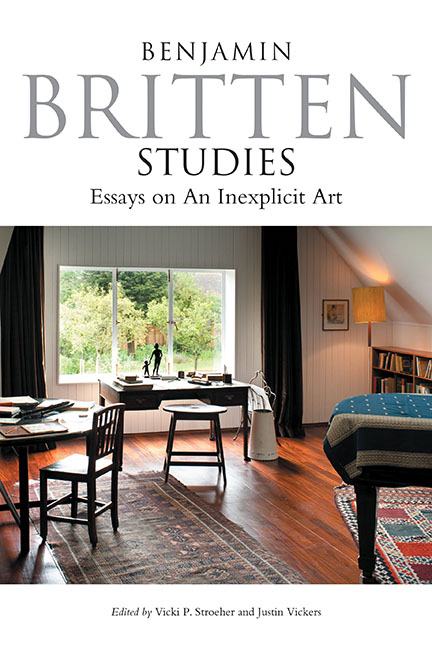Book contents
- Frontmatter
- Dedication
- Epigraph
- Contents
- List of Illustrations
- List of Musical Examples
- List of Tables
- Notes on Contributors
- Acknowledgements
- Bibliographic and General Abbreviations
- Editors’ Preface
- Introduction: Writing About Britten
- Part I Identity: Exile and Return
- Part II Britten and Intimacy
- Part III Britten and His Craft
- 8 “Take These Tokens That You May Feel Us Near”: Remembrance and Renewed Citizenship in Britten's Gloriana
- 9 Traces of Nō: Modularity and Saturation in The Burning Fiery Furnace and The Prodigal Son
- 10 Britten and the Augmented Sixth
- 11 Quickenings of the Heart: Notes on Rhythm and Tempo in Britten
- Part IV Britten and Matters of Practicality
- Conclusion and Epilogue
- Works Cited
- Index
9 - Traces of Nō: Modularity and Saturation in The Burning Fiery Furnace and The Prodigal Son
from Part III - Britten and His Craft
Published online by Cambridge University Press: 25 October 2017
- Frontmatter
- Dedication
- Epigraph
- Contents
- List of Illustrations
- List of Musical Examples
- List of Tables
- Notes on Contributors
- Acknowledgements
- Bibliographic and General Abbreviations
- Editors’ Preface
- Introduction: Writing About Britten
- Part I Identity: Exile and Return
- Part II Britten and Intimacy
- Part III Britten and His Craft
- 8 “Take These Tokens That You May Feel Us Near”: Remembrance and Renewed Citizenship in Britten's Gloriana
- 9 Traces of Nō: Modularity and Saturation in The Burning Fiery Furnace and The Prodigal Son
- 10 Britten and the Augmented Sixth
- 11 Quickenings of the Heart: Notes on Rhythm and Tempo in Britten
- Part IV Britten and Matters of Practicality
- Conclusion and Epilogue
- Works Cited
- Index
Summary
Have you ever […] been to the Noh plays in Japan, some of the most wonderful drama I have ever seen?
Benjamin Britten to Ernest Ansermet, 17 April 1956Here at this crossing, long ago, Narihira sang,
(kami-no-ei) Are you true to your name?
Then, Miyako birds,
I put to you this question:
the one I love –
does she live or does she die?
Jūrō Motomasa, Sumidagawa, trans. Royall TylerWhen the shite (the Madwoman) in a performance of Sumidagawa sings the lines above, she does two things that happen in every nō play: first, she sings a shōdan, one of the standard modules of nō; second, she enriches the world of the play by referencing the world beyond it. Neither of these things happens at the parallel moment in Curlew River, William Plomer's and Benjamin Britten's adaptation of Sumidagawa: their Madwoman sings music without an inherited generic model and references, instead of Narihira, an unidentified “famous traveller who once made a riddle / in this very place.” This confirms what will come as no surprise: Curlew River and the two “church parables” that followed it, The Burning Fiery Furnace and The Prodigal Son, are not nō. Nevertheless, without Japanese nō theater, this trilogy of the 1960s concocted by Plomer, director Colin Graham, and Britten would never have been written. The triptych would therefore seem to invite close consideration of the relationship between the works and their principal dramaturgical source, in order to tease out what “traces” of nō, if any, lingered after Curlew River. But very few critics or scholars have acknowledged that nō was even a factor in the composition of the later parables. Because Curlew River derives from the nō Sumidagawa, points of comparison to the parent form are easy to deduce: it is a relatively simple matter of comparing two stories. The Burning Fiery Furnace and The Prodigal Son take their stories from the Old and New Testament, respectively, so links to nō cannot be explored along simple narrative lines. The tendency among some scholars seems to have been to take the biblical source of narrative in the latter parables as justification to forgo any overt discussion of nō.
- Type
- Chapter
- Information
- Benjamin Britten Studies: Essays on An Inexplicit Art , pp. 259 - 291Publisher: Boydell & BrewerPrint publication year: 2017

